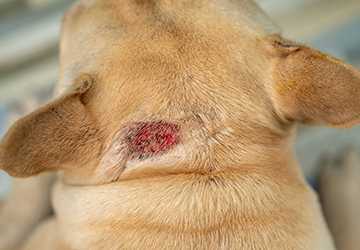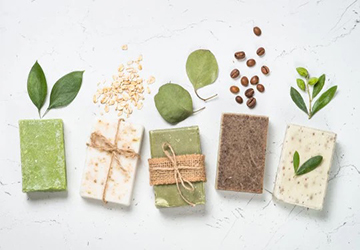How to Prevent and Treat Hot Spots on Your Dog's Skin
Imagine you're cuddling with your furry best friend when you notice them frantically scratching and chewing at a spot on their skin. As a devoted dog parent, your heart sinks. What'sWhat's causing your pup such distress?
Enter the world of hot spots - those angry, red, and sometimes oozing patches that can seemingly appear on your dog's skin overnight. These pesky problems can turn your dog's life (and yours) upside down in a flash.

The constant licking, biting, and scratching not only drives your pooch crazy but can lead to more severe issues if left unchecked. But don't panic!
This blog post will discuss preventing and treating hot spots on your dog's skin. Follow along to learn how to keep your furry friend comfortable, happy, and itch-free.
A Scratch-Free Life: Why Your Dog Deserves Better
Hot spots are more than just an annoying itch. They're like tiny torture chambers on your dog's skin, causing pain, discomfort, and endless frustration.
You can improve your pup's quality of life by nipping this last and dramatically improving your pup's qualifying skin problem.
A dog free from hot spots is a happier, more playful companion: no more interrupted cuddle sessions or sleepless nights filled with constant scratching.
By addressing hot spots early, you and your dog can avoid potential vet bills and more severe skin infections down the road.
Preventing and treating hot spots is something other than isn't science. You can keep your furry friends healthy and itch-free with a few simple steps and some TLC.
Battle Against Hot Spots: Prevention and Treatment Strategies
Alright, dog lovers, it's up to us to roll up our sleeves and dive into the nitty-gritty of keeping those pesky hot spots at bay. Are you ready to embark on a journey through prevention and treatment, arming yourself with the knowledge to keep your furry friend comfortable and itch-free?
Ready to become a hot spot hero? Let's get started!
● Keep It Clean: The Power of Regular Grooming
Picture this: you're giving your pup a good scratch behind the ears when you feel a matted clump of fur. Uh-oh! That's a spot waiting to happen.
Regular grooming isn't about keeping your dog looking dapper—it's its first defence against these irritating skin issues.
Brush your dogs at least a few times a week, more if they are matting. This helps remove dead hair, distribute natural oils, and keep the skin breathing.
Consider a trip to the groomer every 6-8 weeks for a professional clean-up for long-haired breeds. And don't worry about bath time! Use a gentle, dog-specific shampoo to clean the skin without stripping away essential oils.
Your dog might not love bath time, but their skin will thank you.
● The Flea Factor: Banishing the Itch-Inducers
Let's face it—fleas are the ultimate party crashers in your dog's life. These tiny terrors don't cause itching, but they can trigger hot spots faster than you can say "flea collar." So, how do we show these uninvited guests the door?
First, invest in a good-quality flea prevention product. Consistency is critical whether it's a tenthly topical treatment, a collar, or oral medication.

Don't forget to treat your home environment, too—vacuum regularly and wash your dog in hot water. For an extra punch, try sprinkling food-grade diatomaceous earth on your carpets before vacuuming.
It's kryptonite for fleas! Remember, flea-free dogs are less likely to develop those annoying hot spots.
● Diet Detectives: Feeding for Healthy Skin
Have you heard the saying "You are what you eat," rig"t? Well, the same goes for our furry friends. A balanced diet rich in essential fatty acids can work wonders for your dog's health, potentially preventing hot spots before they start.
Look for dog foods that contain omega-3 and omega-6 fatty acids. These nutrition superstars help maintain skin elasticity and promote a healthy, shiny coat.
Fish oil supplements can also be a great addition to your dog's diet, but always check with your vet first. And remember hydration! Make sure your pup always has access to fresh, clean water.
Well-hydrated dogs are less likely to develop dry, itchy skin that can lead to hot spots.
Conclusion
Keep another day from passing by while watching your furry friend suffer from hot spots.
By implementing these prevention and treatment strategies, you're not just solving a skin problem but giving your dog a happier, more comfortable life. Remember, every scratch could be the start of a hot spot. Why risk it?
Take action today. Your dog can't tell you how much they are, but you can see it in their eyes. Imagine the relief they'll feel when the itching stops.
Your quick action now means more tail wags and slobbery kisses later. Your best friend is counting on you!
Frequently Asked Questions
Q: How quickly can a hot spot develop?
Ans: Hot spots can appear alarmingly fast, often within hours. That'sThat'sprevention and quick action are crucial. Regular checks can help catch them early.
Q: Can hot spots spread to other dogs?
Ans: Hot spots are not contagious, but the underlying causes (like fleas) can be. It's best to keep affected dogs separate until the issue is resolved.
Q: Are certain breeds more prone to hot spots?
Ans: Yes, breeds with thick or long coats, like Golden Retrievers and German Shepherds, are more susceptible. However, any dog can develop hot spots.
Q: Can I use human antibiotic cream on my spot?
Ans: Avoid human medications. Consult your vet for dog-specific treatments. Some human products can be harmful if ingested by dogs.





